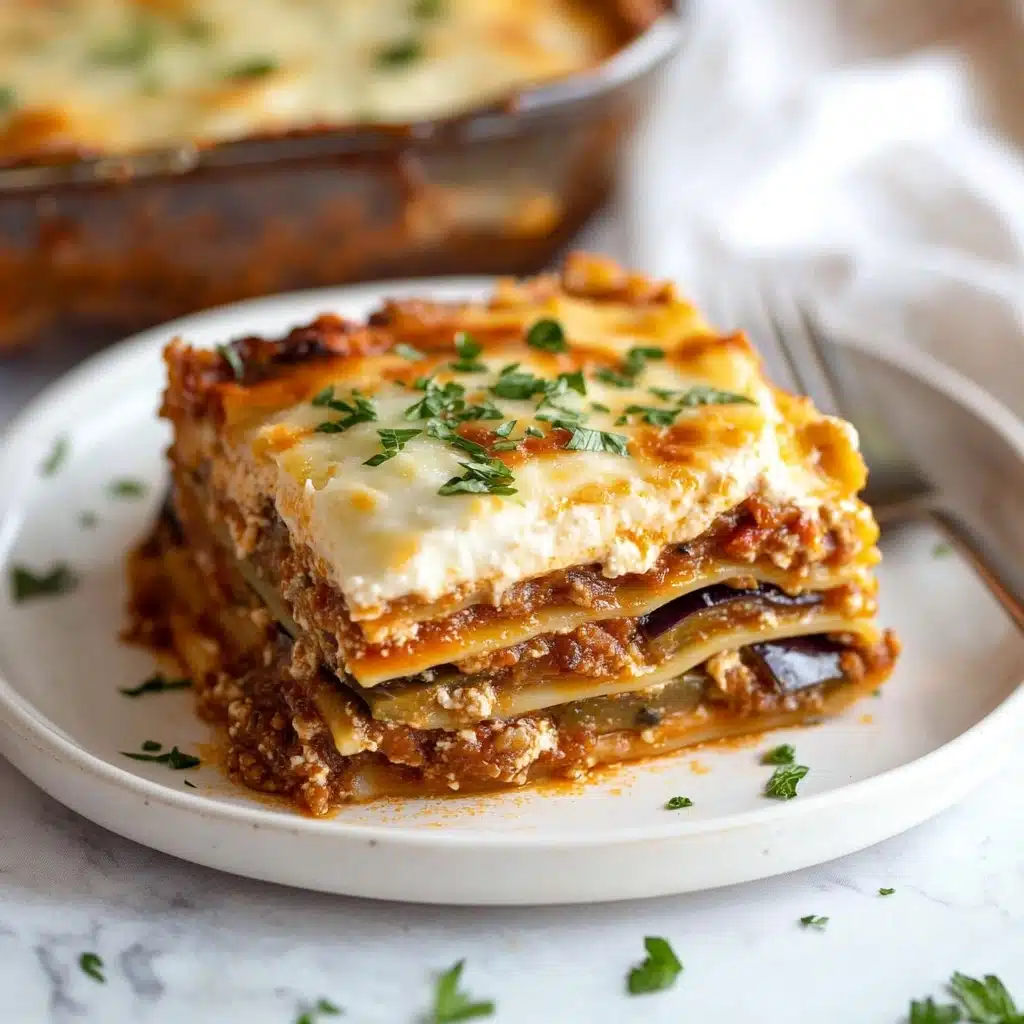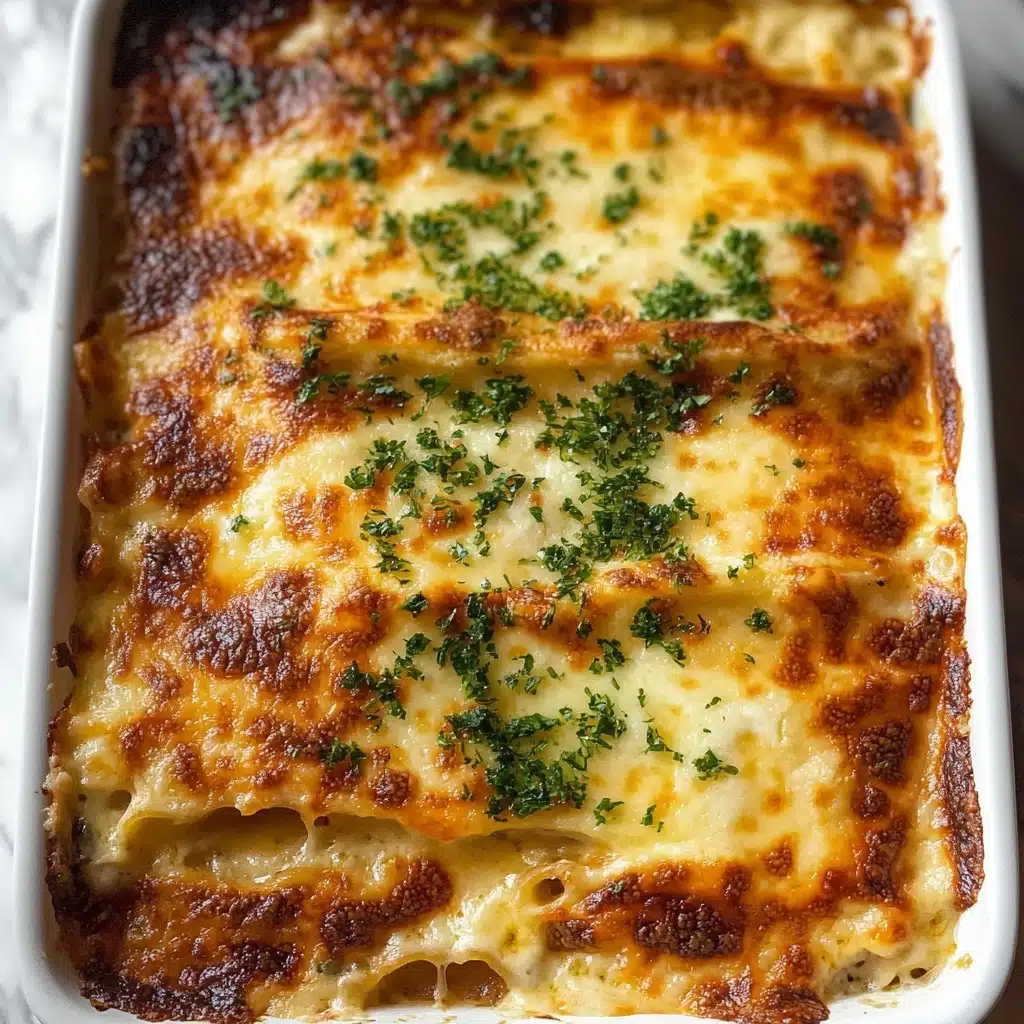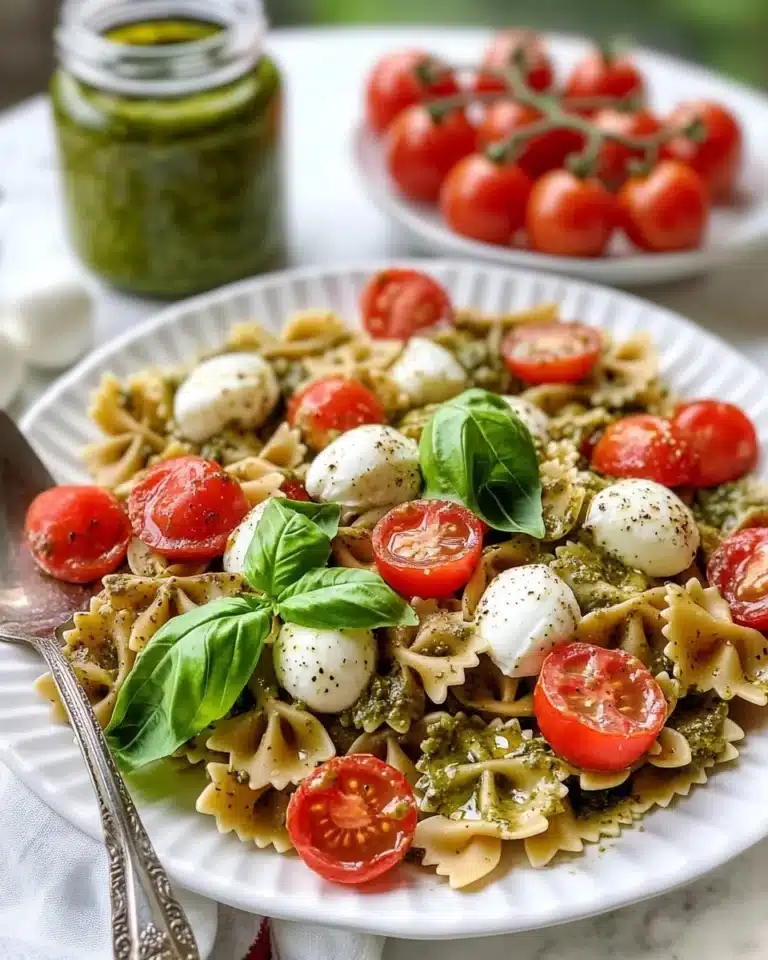Get ready to dive into layers of flavor with this Outrageously Delicious Greek Moussaka. This cherished Mediterranean classic is an epic adventure in taste, combining succulent beef, tender vegetables, creamy béchamel, and a sprinkle of rich spices – a dish that will surely transport your taste buds to a Greek taverna with every bite!
Why You’ll Love This Recipe
- Flavor Symphony: Indulge in the harmonious blend of herbs and spices dancing between layers of tender meat and creamy topping.
- Comforting Layers: Each bite captures the essence of home-cooked comfort, making it a perfect dish for family gatherings or cozy nights in.
- Customizable Creation: Adapt the moussaka to your taste or dietary needs, making it a versatile staple in your recipe collection.
Ingredients You’ll Need
Creating this Outrageously Delicious Greek Moussaka is a cinch once you gather these essential ingredients. Each element brings its own charm—the vibrant aroma of herbs, the savoriness of beef, and the silky richness of béchamel—to craft this iconic dish.
- Ground/Minced Beef: Choose lean beef for a rich, flavorful base without excess grease.
- Tomato Paste: This deepens the sauce’s flavor, adding a vibrant, tangy note.
- Zucchini/Courgettes: Their sweetness contrasts beautifully with the savory elements.
- Beef Stock: Enhances the meatiness, making the sauce full-bodied and robust.
- Eggplant/Aubergine: Essential for that creamy, melt-in-your-mouth vegetable layer.
- Pecorino Romano Cheese: Offers a savory, salty note that brings the béchamel to life.
Variations
This recipe is just as flexible as it is delicious, a canvas ready to be adapted! Here are some delightful twists to suit different palates and preferences, proving how adaptable this Greek dish can be.
- Vegetarian Moussaka: Substitute the beef layer with lentils or a medley of hearty mushrooms to keep it plant-friendly.
- Dairy-free Delight: Use coconut milk and a dairy-free cheese substitute in the béchamel for those avoiding dairy.
How to Make Outrageously Delicious Greek Moussaka
Step 1: Sauté the Beef
Heat olive oil over medium heat in a large pan. Add diced onions, sauté until translucent, then introduce minced garlic. Add the ground beef, breaking it apart as it browns. Stir in tomato paste, letting it caramelize slightly for richer flavor. Pour in red wine to deglaze, then add tomato passata and beef stock. Simmer with spices and herbs until the sauce thickens, creating a luscious base.
Step 2: Prepare the Vegetables
Layer paper towels on your counter, laying slices of eggplant on top. Generously salt them to draw out moisture. Cover with towels, layering zucchini and potato slices over them, and press down to absorb excess moisture. Fry each vegetable in hot oil until golden and tender, laying them back on fresh towels to drain the residual oil.
Step 3: Craft the Béchamel Sauce
In a pot, melt butter over medium heat, stirring in flour to form a roux. Gradually whisk in milk, ensuring a lump-free sauce. Season perfumed with nutmeg and Pecorino cheese, stirring until smooth. Quickly whisk in egg yolks, then reserve part of this creamy concoction to blend with your beef mixture for added silkiness.
Step 4: Assemble the Layers
Begin by lining a baking dish with potato slices, seasoning as you layer. Continue with zucchini and eggplant, sprinkling with parsley and cheese. Spread the beef mixture evenly before topping with a final layer of eggplant and the decadent béchamel. Sprinkle more cheese on top, preparing for the golden finish.
Step 5: Bake and Rest
Bake in a preheated oven at 180°C/350°F until the top is golden brown and slightly charred. Let it sit for at least 15 minutes before serving, allowing the layers to firm up yet stay luscious.
Pro Tips for Making Outrageously Delicious Greek Moussaka
- Achieve the Perfect Layering: To maintain the structure and achieve even baking, ensure each vegetable layer is dry and seasoned adequately.
- Perfect Béchamel Consistency: Whisk continuously while warming the milk, ensuring no lumps and a perfectly creamy texture.
- Efficient Oil Drainage: Use a combination of frying and baking to maintain vegetable texture while reducing excess oil.
- Flavor Depth with Cinnamon: A pinch of cinnamon in the beef sauce enhances its savory richness, making the dish truly stand out.
How to Serve Outrageously Delicious Greek Moussaka

Garnishes
Top with a scattering of fresh parsley and additional Pecorino cheese for an added tangy finish. This brightens each serving and adds a fresh, aromatic touch that complements the dish’s richness.
Side Dishes
Pair your moussaka with a fresh Greek salad loaded with tomatoes, cucumbers, olives and feta. The crisp, refreshing salad balances the hearty dish perfectly. A side of crusty bread is also a chic companion to scoop up any lingering sauce.
Creative Ways to Present
Serve your moussaka in individual ramekins for an elegant presentation at dinner parties. Alternatively, craft in a rectangular dish for a simple but classic family-style service, layering for a surprising reveal as you serve each portion.
Make Ahead and Storage
Storing Leftovers
Leftovers can last in the fridge for up to 3-4 days in an airtight container, preserving the flavors while allowing them to meld further. This dish becomes even more flavorful as it sits, making a great reheating option.
Freezing
For longer storage, moussaka freezes excellently for up to a month. Allow it to cool fully, wrap in both cling film and foil, then freeze. Make sure to mark the date for reference in case you’re planning meals ahead of time.
Reheating
To reheat, thaw the moussaka overnight in the fridge if frozen, then warm in a preheated oven at 180°C/350°F until thoroughly heated. This ensures the topping remains crisp and the layers hold their form.
FAQs
-
Can I make this moussaka vegetarian?
Absolutely! You can substitute the beef with a mix of lentils and mushrooms to create a hearty and flavorful vegetarian version that maintains the dish’s iconic stature.
-
Is it possible to bake the vegetables instead of frying?
Yes, baking offers a great alternative. Simply coat the vegetables with olive oil, arrange them on baking sheets, and bake at 200°C/400°F until golden and tender.
-
What cheese can I substitute for Pecorino Romano?
If Pecorino isn’t available, Parmesan or traditional Kefalotiri cheese make fantastic substitutes, each bringing a slightly different but delightful flavor to the béchamel.
-
How can I make the béchamel sauce thicker?
Ensure a consistent whisking during its preparation and allow the sauce to simmer slightly longer to reduce and thicken to your preferred consistency.
Final Thoughts
There you have it—a cozy, hearty, and absolutely Outrageously Delicious Greek Moussaka that’s a testament to timeless comfort food! Share this flavorful feast with friends and family, relishing the joy and satisfaction it brings to your table. Enjoy every layer, and don’t forget to make it your own!









